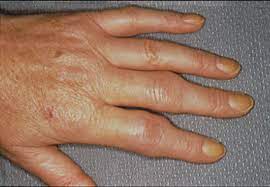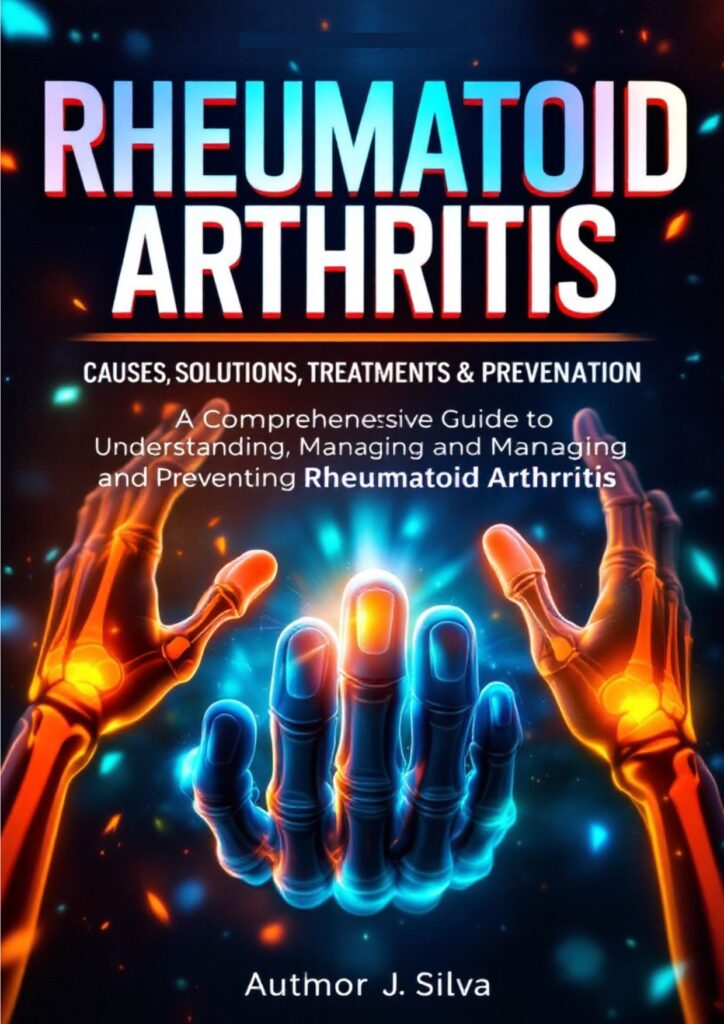
Introduction
Rheumatoid arthritis (RA) is a chronic autoimmune disease that causes inflammation in the joints and surrounding tissues. This condition affects millions worldwide, leading to stiffness, pain, and joint deformities over time. Identifying the early signs of rheumatoid arthritis can make a life-changing difference. The earlier treatment begins, the more likely it is to slow or prevent permanent joint damage.

This detailed guide explores the early symptoms, causes, and treatment options, helping you recognize the warning signs and take action before the disease progresses.
Understanding RA and Its Early Signs
This autoimmune arthritis develops when the immune system mistakenly attacks healthy joint tissue. The result is chronic inflammation, especially in the small joints of the hands and feet. The initial symptoms are often subtle but progressively worsen over time.
Common Early Signs
- Persistent joint pain or tenderness
- Morning stiffness that lasts longer than 30 minutes
- Mild swelling in the fingers or wrists
- Fatigue and reduced energy levels
- Loss of joint flexibility
These symptoms may come and go, which is why many people mistake them for normal aging or overuse.
What Causes Rheumatoid Arthritis?
The cause of this inflammatory joint disorder is complex and multifactorial. Experts believe it results from an interaction between genetics and environmental triggers.

- Genetic predisposition – Individuals with certain genes (like HLA-DR4) have a higher risk.
- Environmental triggers – Smoking, pollution, or viral infections may activate the disease.
- Hormonal factors – Women are more prone to developing this autoimmune disease, likely due to hormonal influence.
- Immune dysfunction – The immune system attacks the joint lining (synovium), leading to chronic inflammation and tissue damage.
According to Mayo Clinic, early treatment greatly reduces long-term complications.
Common Symptoms and Progression
The symptoms of rheumatoid arthritis vary in intensity but often include:
- Painful joints that feel warm or tender
- Stiffness in the morning or after rest
- Swollen joints, especially in fingers and wrists
- Fatigue, low-grade fever, and appetite loss
- Symmetrical inflammation – both sides of the body are usually affected
As the disease progresses, joint damage can lead to deformity and reduced mobility. It can also affect other organs, such as the eyes, lungs, and heart.
Early Signs in Fingers and Hands
One of the most noticeable early signs of rheumatoid arthritis appears in the fingers and hands. Because these joints are small and frequently used, inflammation here becomes evident early on.
Typical Indicators
- Pain in finger joints that persists beyond normal strain
- Swelling and warmth in the knuckles or wrist area
- Difficulty gripping objects or performing fine motor tasks
- Symmetrical symptoms – both hands are affected equally
- Finger deformities – in later stages, the joints may curve or shift position
If these issues last for several weeks, it’s time to consult a healthcare professional for testing.
How Rheumatoid Arthritis Affects Daily Life
Beyond physical discomfort, this condition can significantly impact daily routines and mental health. People with chronic arthritis often report challenges such as:
- Struggling with tasks like buttoning clothes or holding utensils
- Reduced productivity due to pain and fatigue
- Emotional strain, anxiety, or depression from chronic pain
- Limited participation in hobbies and physical activities
With proper management, however, many individuals continue leading active, fulfilling lives.
Diagnosis and Medical Evaluation
Early and accurate diagnosis is essential to control joint inflammation before irreversible damage occurs. Doctors typically use a combination of tests and assessments, including:
- Physical examination – Checking for joint tenderness, warmth, and swelling.
- Blood tests – Detecting rheumatoid factor (RF) or anti-CCP antibodies.
- Imaging studies – X-rays, MRI, or ultrasound can reveal early joint erosion.
A rheumatologist will review these findings to confirm rheumatoid arthritis and determine its severity.
Treatment Options
Treatment aims to manage symptoms, reduce inflammation, and prevent joint damage. Most patients benefit from a combination of medication, physical therapy, and lifestyle adjustments.
Medications
- DMARDs (Disease-Modifying Antirheumatic Drugs) – Methotrexate and sulfasalazine help slow disease progression.
- Biologic agents – Target specific immune pathways for precise control.
- NSAIDs – Reduce inflammation and ease pain during flare-ups.
- Corticosteroids – Provide fast relief but are used short-term due to side effects.
Physical Therapy
Gentle exercises can improve range of motion and strengthen supporting muscles. Occupational therapy also teaches ways to protect joints during everyday activities.
Lifestyle Adjustments
- Maintain a healthy weight to reduce joint stress.
- Eat an anti-inflammatory diet rich in omega-3s, fruits, and vegetables.
- Avoid smoking and limit alcohol intake.
- Practice stress management through yoga or meditation.
According to NCBI research, these measures can significantly improve outcomes when combined with medication.
Get Your Ultimate Guide to Rheumatoid Arthritis Now!
Are you struggling with rheumatoid arthritis or worried about the early signs of RA? Don’t wait until the pain gets worse! Our comprehensive eBook, Rheumatoid Arthritis: Causes, Solutions, Treatments & Prevention, is your complete guide to understanding, managing symptoms, and preventing joint damage.
Inside this eBook, you’ll discover:
- Detailed explanations of rheumatoid arthritis symptoms and RA symptoms
- Proven strategies for rheumatoid arthritis treatment
- How to recognize early signs of rheumatoid arthritis before serious damage occurs
- Lifestyle tips, exercises, and diet plans for arthritis in fingers and other affected joints
- Expert advice for living a healthy, active life
Don’t let rheumatoid arthritis control your life! Take the first step towards relief and empowerment.
Click here to get your eBook now!
Why you need this eBook:
- Easy-to-understand language, perfect for anyone dealing
- Actionable solutions and preventive measures you can implement today
- Professional, science-backed guidance from experts in autoimmune health
Take control of your health—get your copy today and start managing like a pro!
Preventing Flares and Long-Term Damage
Although rheumatoid arthritis can’t be cured, flare-ups can be minimized with proactive management. Here are strategies to help control the disease:
- Follow treatment consistently – Skipping medication can trigger relapse.
- Prioritize joint protection – Use ergonomic tools and adaptive devices.
- Stay active – Regular, low-impact movement keeps joints flexible.
- Get enough rest – Balance activity with restorative sleep.
- Monitor your symptoms – Track pain levels to identify potential triggers.
Living with chronic joint inflammation can influence every aspect of a person’s life, from morning routines to social activities. Simple tasks like preparing breakfast or typing at work can become frustrating challenges. Developing a personalized wellness plan with your doctor can help restore control and independence, making everyday living more manageable despite the symptoms.
Emotional well-being plays an equally important role in managing this condition. Many individuals experience anxiety or depression due to ongoing pain and fatigue. Support groups, counseling, or mindfulness-based therapies can make a significant difference in coping with emotional stress while improving overall quality of life.
Emerging research highlights the benefits of alternative approaches such as acupuncture, hydrotherapy, and herbal supplements to complement traditional treatments. While these methods shouldn’t replace prescribed medication, they can enhance comfort and reduce stiffness when used responsibly under medical guidance.
Coping with Emotional Challenges
Living with chronic joint pain can lead to emotional fatigue, frustration, and even isolation. Building a strong support network, engaging in therapy, or practicing mindfulness can help manage the mental burden that often accompanies physical discomfort. Emotional resilience plays a vital role in maintaining overall health.
Importance of Sleep and Recovery
Restful sleep allows the body to repair tissues, balance hormones, and reduce inflammation. Establishing a regular sleep schedule, avoiding caffeine late in the day, and creating a calm nighttime environment can improve sleep quality. Proper rest also helps enhance mood and energy levels during the day.
Role of Nutrition in Joint Health
A balanced diet can positively influence joint comfort and mobility. Nutrients such as omega-3 fatty acids, vitamin D, and antioxidants are known to support healthy cartilage and reduce inflammation. Including fish, leafy greens, nuts, and fresh fruits in daily meals can strengthen the body’s natural defenses and improve long-term wellness.

Boost Your Joint Health with JointVive A Unique Solution for Comfort, Flexibility, and Mobility
FAQ: Early Signs of Rheumatoid Arthritis
1. What are the first noticeable signs ?
Initial signs often include stiffness, fatigue, and mild swelling in small joints, especially in the fingers and wrists.
2. Can rheumatoid arthritis start in the fingers?
Yes, joint inflammation frequently begins in the fingers and hands, leading to pain and reduced grip strength.
3. Is rheumatoid arthritis curable?
There’s currently no cure, but modern treatments can achieve long-term remission and prevent severe joint damage.
4. What foods help reduce inflammation in ?
Omega-3 fatty acids (from fish), leafy greens, and berries have natural anti-inflammatory properties.
5. When should I see a doctor?
If you experience persistent joint stiffness, swelling, or pain lasting more than two weeks, schedule a consultation with a rheumatologist.
Conclusion
Recognizing the early signs of rheumatoid arthritis can drastically change your journey with this chronic disease. When detected early, effective treatment can prevent joint destruction, preserve mobility, and enhance quality of life.
If you or someone you know shows signs of autoimmune arthritis, consult a healthcare professional. The earlier you take action, the greater your chances of maintaining healthy, flexible joints for years to come.
SEE ALSO: Rheumatoid Arthritis Causes: And How to Prevent It
SEE ALSO: Rheumatoid Arthritis – E-book
SEE ALSO: Signs of Rheumatoid Arthritis: See All
SEE ALSO: Arthritis in the Fingers: Causes and Prevention
Disclaimer: This article is for informational purposes only and does not replace the advice of a healthcare professional. Consult a doctor or nutritionist before starting any supplementation. Some links in the text are affiliate links, which means we may receive a commission if you make a purchase. This does not impact the price for you and helps us continue to bring you quality content.


2 comentários sobre “RA: Early Signs of Rheumatoid Arthritis”